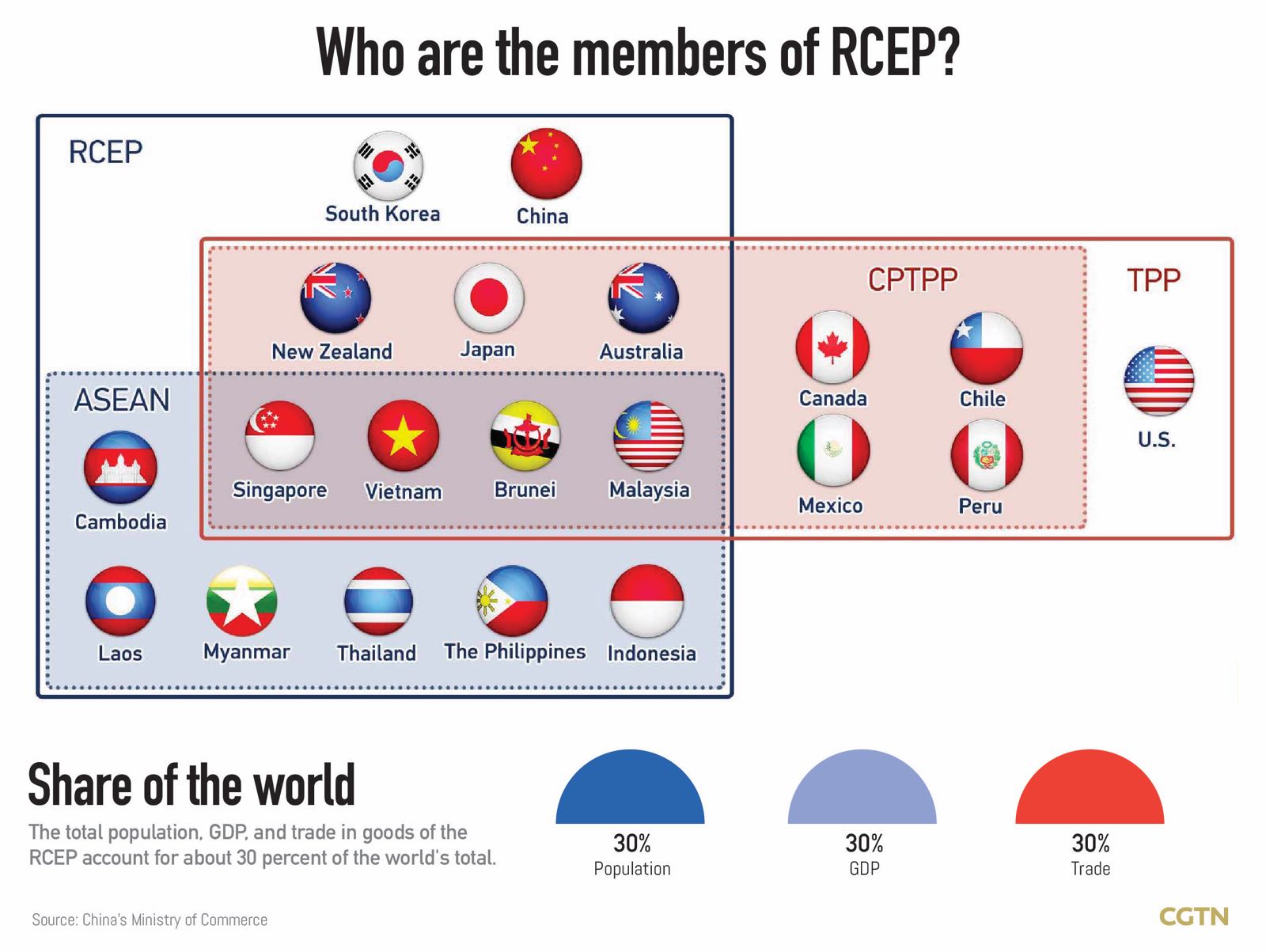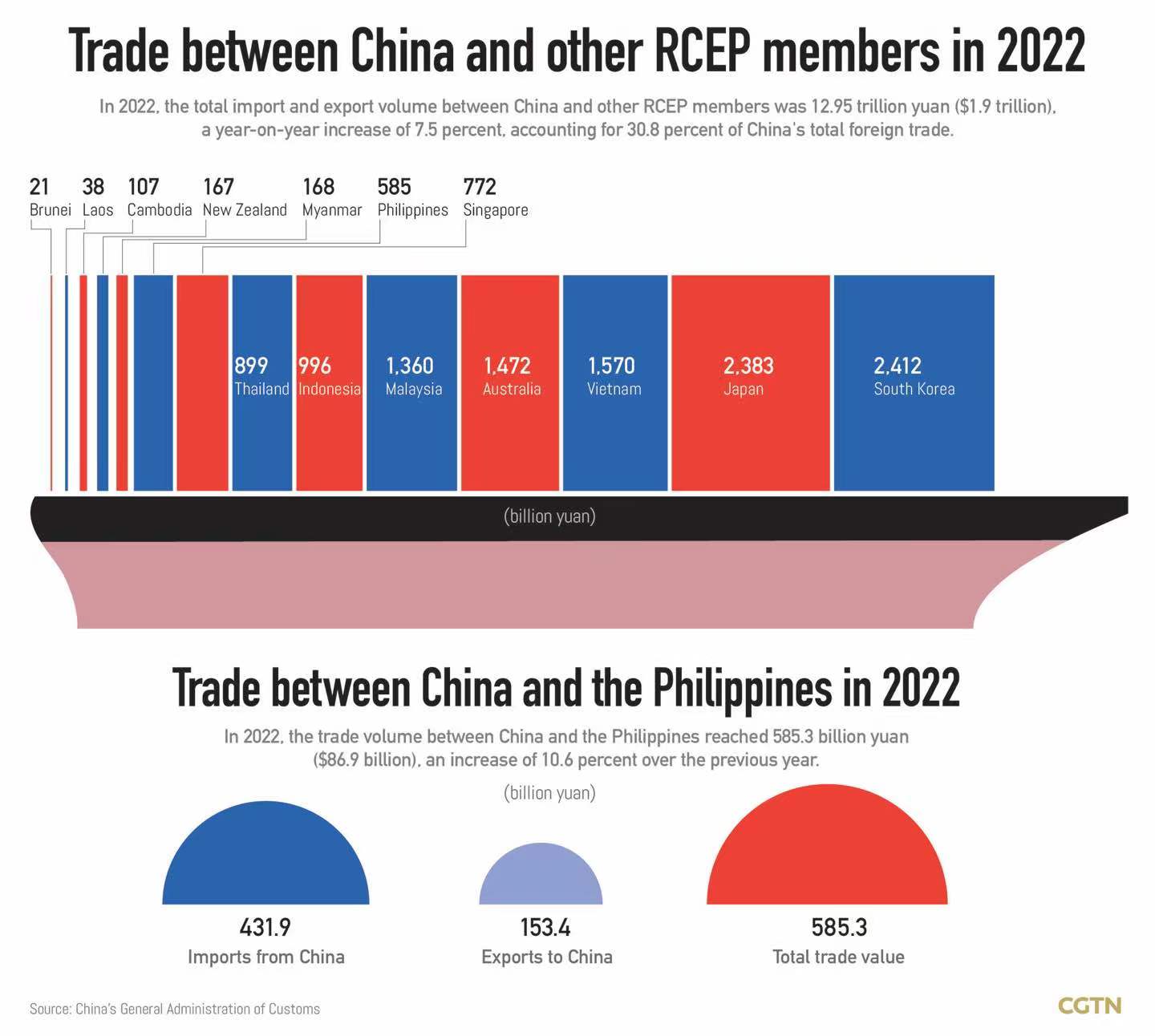The Regional Comprehensive Economic Partnership (RCEP) took effect on Friday for the Philippines, meaning the agreement is now in effect for all 15 members.
The agreement, which groups together 10 Association of South East Asian (ASEAN) countries along with China, Japan, South Korea, Australia and New Zealand, is the largest free trade pact ever forged in the world and covers nearly a third of the world's population as well as 30 percent of global gross domestic product. By 2030, this number could rise to 50 percent, according to HSBC.
The Chinese Commerce Ministry called the full entry into force a marker of a new stage for the world's most populous and promising free trade area that also has the world's largest economic and trade scale.

The fact that RCEP has entered into force for all 15 members reflects their collective support for free trade and would also inject momentum for further regional cooperation and integration between member states, said Xu Xiujun, researcher at the Institute of World Economics and Politics at the Chinese Academy of Social Sciences.
“As the RCEP becomes effective (for all members), it would help set an example for the world in creating a more prosperous regional market as well as in building a more open and free global economy,” Xu told CGTN.
In the first quarter of 2023, China's total trade with the 14 other RCEP members grew by 7.3 percent year-on-year and accounted for 31.2 percent of China's total trade during the period, according to Chinese official data.

Philippines' Trade and Industry Secretary Alfredo Pascual described the RCEP agreement as "a modern, comprehensive, high-quality and mutually beneficial economic partnership."
"It's all systems go," Pascual said in a statement released on Thursday, adding the Philippines' tariff commitments under RCEP are set to be implemented from June 2.
The country's GDP would increase by over 2 percent through its participation in the trade agreement, according to a study by the Philippine Institute for Development Studies.
RCEP was first brought to the table at the 2011 ASEAN Summit in Bali, Indonesia while negotiations formally began the next year in Cambodia.
Over the years, RCEP is expected to enlarge the global economy by adding $209 billion annually to world incomes and $500 billion to world trade by 2030, according to the Brookings Institution.
"It will provide a strong push to economic growth in this part of the world, and a strong support to multilateralism at the backdrop of rising geo-economic fragmentation," said He Weiwen, senior fellow at the Center for China and Globalization (CCG), a Beijing-based think tank.
As the regional economy further integrates under RCEP, businesses are set to enjoy wider market access and a better investment environment. This would greatly benefit consumers in Asia, who are looking for better-quality products at cheaper prices.
Moreover, RCEP will see Asian importers increasingly spurn business with the EU, the U.S. and other non-member markets, cementing the Asia-Pacific region's primacy in global trade, according to a report by the United Nations Conference on Trade and Development. In fact, the sheer economic size and trade dynamism of RCEP members will make Asia a "centre of gravity for global trade," the analysis says.
(Graphics by Zhao Hong)